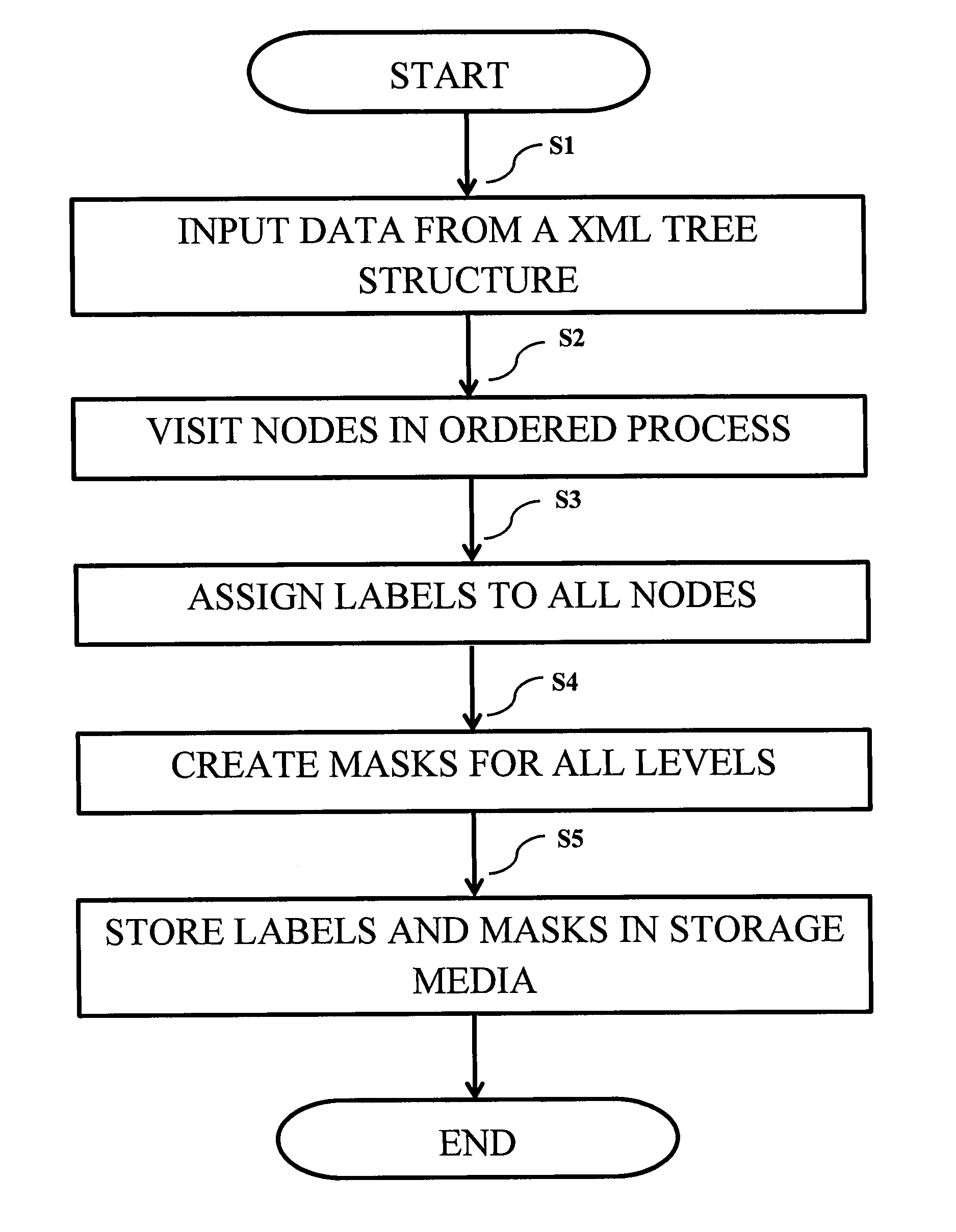XML node labeling and querying using logical operators
a node labeling and querying technology, applied in the field of xml node labeling and querying using logical operators, can solve the problems of large storage space for structural information labels, inapplicability of labeling schemes for dynamic xml documents, and suffer from query processing time, so as to improve querying time
- Summary
- Abstract
- Description
- Claims
- Application Information
AI Technical Summary
Benefits of technology
Problems solved by technology
Method used
Image
Examples
Embodiment Construction
[0033]In the present invention, each node is assigned a label with the form where the level is the level where the node exists and the number is a unique identifying number. The unique identifying number is generated by using a masking technique in subnetting. Subnetting is the process of dividing networks into one or more subnetworks. See J. D. Wegner and Robert Rockell, “IP addressing and subnetting, including IPv6,” Syngress Media (2000), hereby incorporated by reference in its entirety. A difference between the technique applied in this invention and that in computer network subnetting is the size of numbers generated. The size of the numbers generated using our technique is dynamic in a way that the numbering starts with one bit for the first node (1), two bits for the second two nodes (10 and 11), and so on. Whereas, the size of the numbers generated using the technique in computer network subnetting is fixed in a way that all numbers has the same size (32 bits). For example,...
PUM
 Login to View More
Login to View More Abstract
Description
Claims
Application Information
 Login to View More
Login to View More - R&D
- Intellectual Property
- Life Sciences
- Materials
- Tech Scout
- Unparalleled Data Quality
- Higher Quality Content
- 60% Fewer Hallucinations
Browse by: Latest US Patents, China's latest patents, Technical Efficacy Thesaurus, Application Domain, Technology Topic, Popular Technical Reports.
© 2025 PatSnap. All rights reserved.Legal|Privacy policy|Modern Slavery Act Transparency Statement|Sitemap|About US| Contact US: help@patsnap.com



